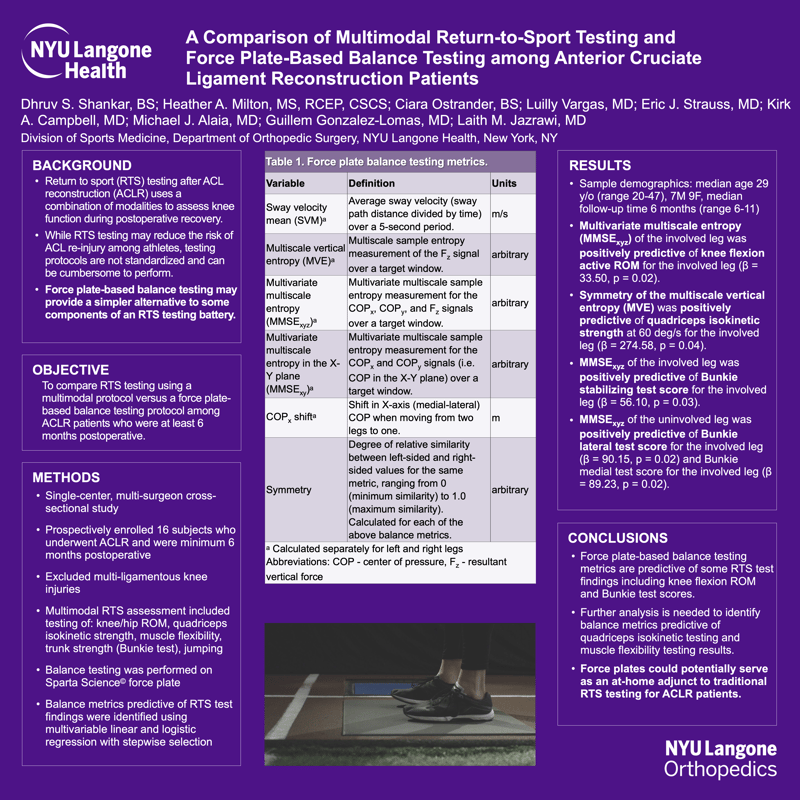
Dhruv S. Shankar, Heather A. Milton, Ciara Ostrander, Luilly Vargas, Eric J. Strauss, Kirk A. Campbell, Michael J. Alaia, Guillem Gonzalez-Lomas, Laith M. Jazrawi. A Comparison of Multimodal Return-to-Sport Testing and Force Plate-Based Balance Testing among Anterior Cruciate Ligament Reconstruction Patients. Poster presented at: International Society of Arthroscopy, Knee Surgery, and Orthopedic Sports Medicine Biennial Congress; June 20, 2023; Boston, MA
“Force plates could potentially serve as an at-home adjunct to traditional RTS testing for ACLR patients."
Background: Return to sport (RTS) testing after anterior cruciate ligament reconstruction (ACLR) surgery often involves the use of expensive modalities such as isokinetic strength testing. Force plate-based balance testing may provide a simpler alternative to some components of a traditional multimodal RTS testing battery. The purpose of our study was to identify correlations between RTS test findings and balance metrics.
Methods: We conducted a cross-sectional study of patients who underwent ACLR at our center and were at least 6 months postoperative. Subjects completed our multimodal Institutional Return-to-Sport (IRTS) testing battery which included hip and knee range of motion (ROM) testing and isokinetic quadriceps strength testing. Subjects also underwent balance testing on a commercially-available force plate. Associations between IRTS findings and balance metrics were measured using the Spearman rank correlation coefficient. Significance of each correlation was evaluated at ? = 0.05.
Results: Sixteen patients (7 male, 9 female) were enrolled with a median age of 29 years (range 20-47). Greater left–right symmetry of the sway velocity mean (SVM) was positively correlated with passive knee flexion ROM (p = 0.02), hamstring flexibility (p = 0.04), quadriceps strength (p = 0.03), passing the step-down test (p = 0.01), and passing the lateral Bunkie test (p = 0.02) for the involved side. Greater left-right symmetry of the multiscale vertical entropy (MVE) was positively correlated with quadriceps strength (p = 0.02) and passing the triple jump test (p = 0.046) on the involved side.
Conclusion: Force plate-based balance testing metrics are significantly correlated with key components of the ACLR RTS protocol, including knee flexion ROM testing and quadriceps isokinetic strength testing. Therefore, balance testing may serve as a convenient proxy for these measurements when assessing RTS readiness after ACLR.